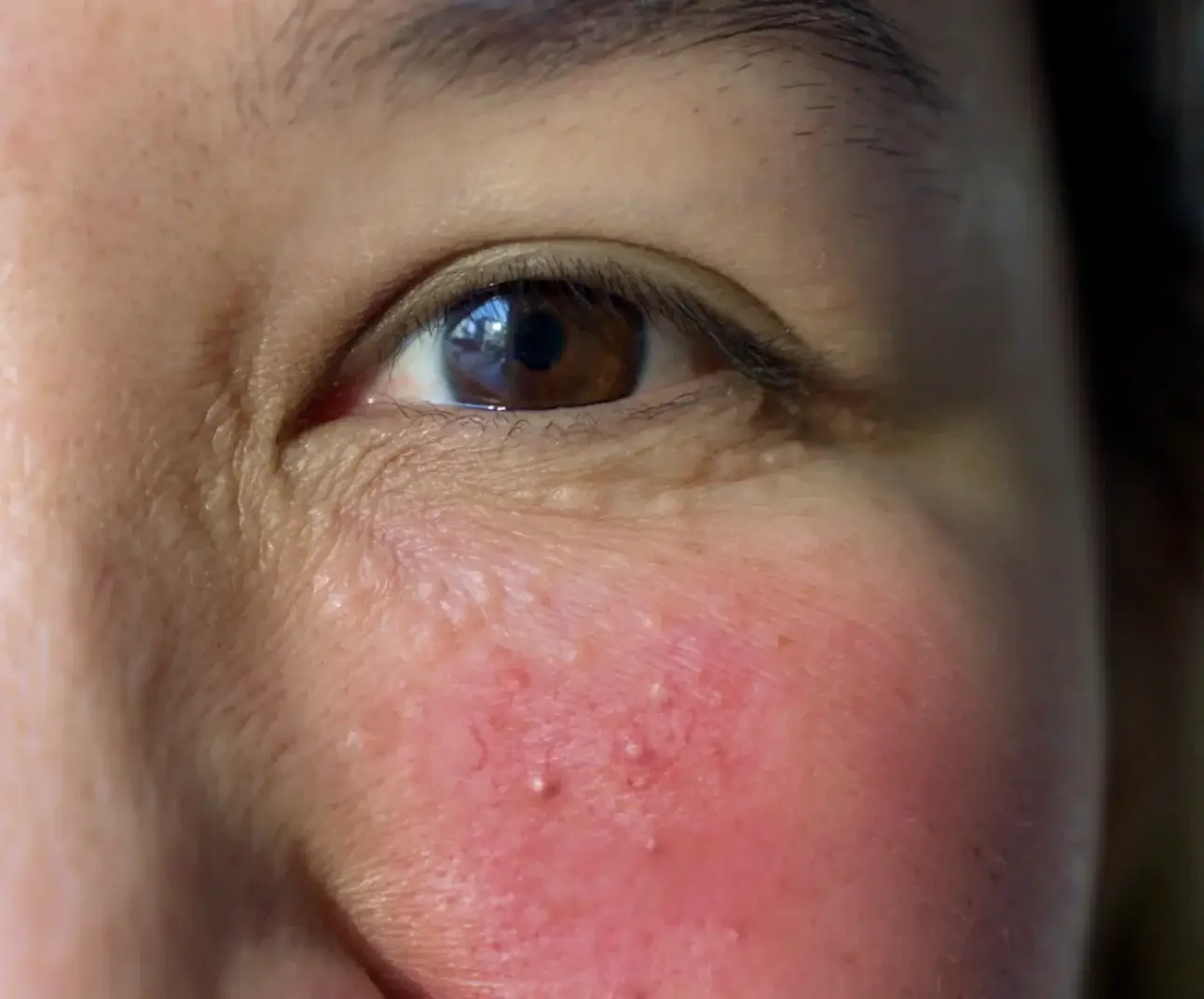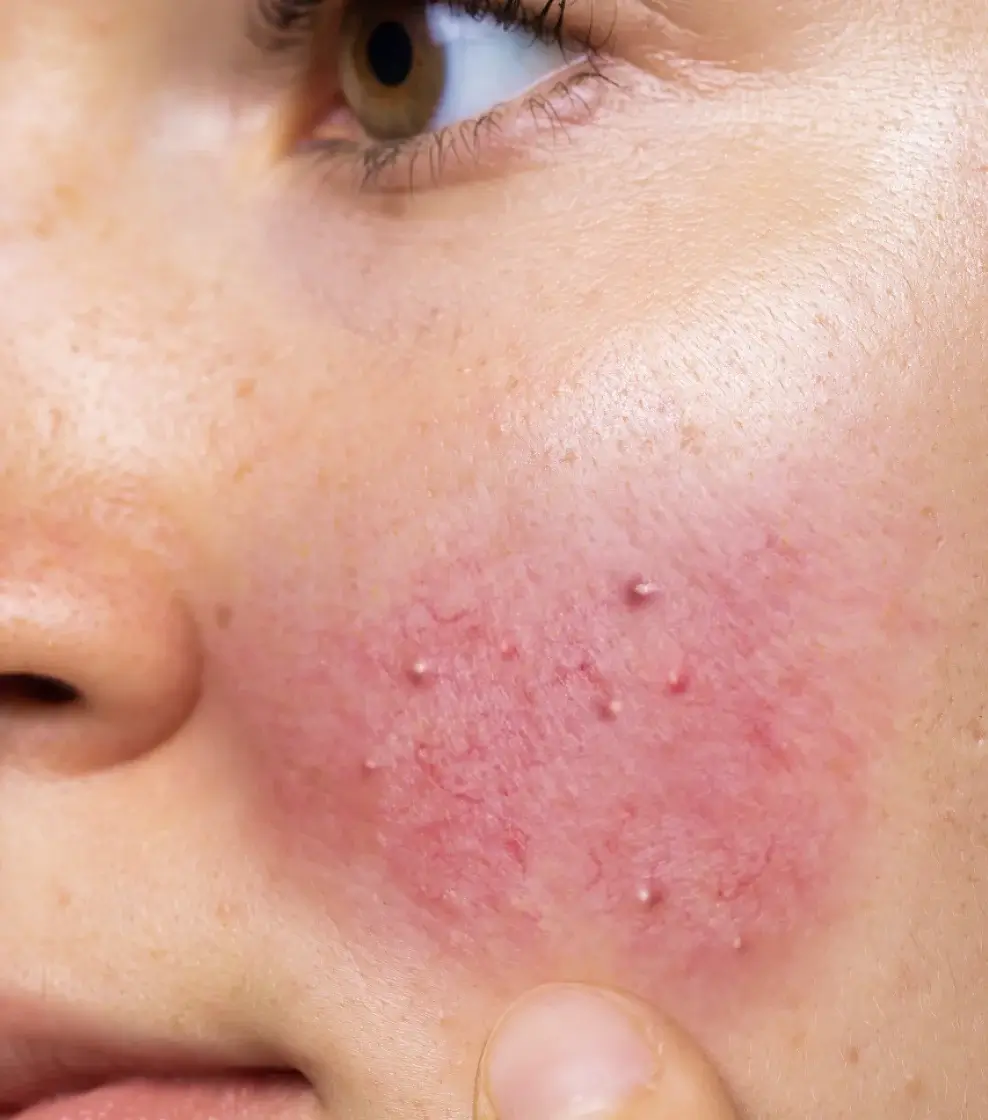Learn about who we are, what we believe
and the people who lead us
Discover our unique scientific approach
for diseases with high unmet need.
The first and only FDA-approved
treatment for Demodex blepharitis
Explore the possibilities of our robust pipeline
to address significant unmet patient needs
Find additional corporate
and stock information.
Rosacea is a common inflammatory skin condition that affects more than 16 million people in the US.1
Rosacea is a chronic condition characterized by facial redness, flushing and visible blood vessels. Papulopustular rosacea can result in redness, swelling and/or pus-filled bumps. There may be several factors that contribute to the cause of rosacea, including genetics, environmental factors, an overactive immune system and Demodex mites.1-3

Not a real patient.

Rosacea signs and symptoms often vary by individual and regularly fluctuate between periods of exacerbation, often referred to as a “flare up,” and remission.2,5 Common rosacea triggers include (but are not limited to)6,7
1. Buddenkotte J, Steinhoff M. Recent advances in understanding and managing rosacea. F1000Res. 2018;7:F1000 Faculty Rev-1885. 2. Wilkin J, Dahl M, Detmar M, et al. Standard classification of rosacea: Report of the National Rosacea Society Expert Committee on the Classification and Staging of Rosacea. J Am Acad Dermatol. 2002;46(4):584-587. 3. Chang YS and Huang YC. Role of Demodex mite infestation in rosacea: A systemic review and meta-analysis. J Am Acad Dermatol. 2017;77(3):441-447. 4. Forton FMN. The Pathogenic Role of Demodex Mites in Rosacea: A Potential Therapeutic Target Already in Erythematotelangiectatic Rosacea? Dermatol Ther (Heidelb). 2020;10(6):1229-1253. 5. Rainer B, Kang S, Chien AL. Rosacea: Epidemiology, pathogenesis, and treatment. Dermatoendocrinol. 2017;9(1):e1361574. 6. Zhang H, Tang K, Wang Y, Fang R, Sun Q. Rosacea treatment: review and update. Dermatol Ther (Heidelb). 2021;11(1):13-24. 7. Crawford GH, Pelle MT, James WD. Rosacea: I. Etiology, pathogenesis, and subtype classification. J Am Acad Dermatol. 2004;51(3):327-341.
Our Terms of Use and Privacy Policy have changed.
By clicking accept, you agree that you have read and will abide by these new terms.